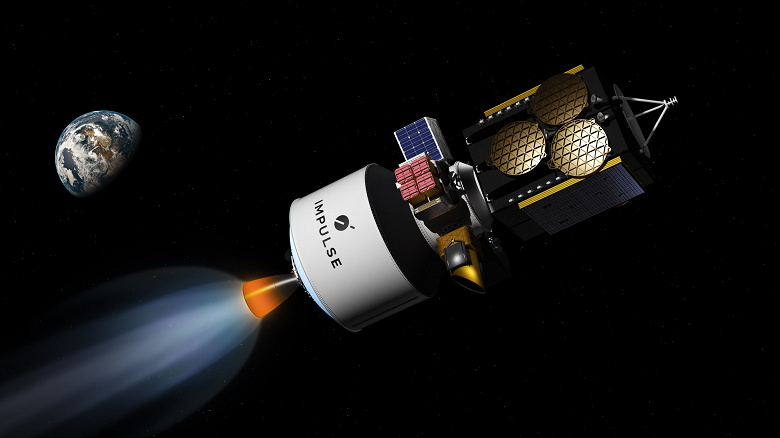“SpaceX started the party by opening up access to low Earth orbit. Impulse wants to achieve the same thing, but for all other orbits”
The American space company Impulse Space presented plans to develop a new orbital transfer vehicle capable of delivering satellites to geostationary and other orbits.
On January 17, the company announced that it was working on the Helios stage. It will use a liquid oxygen and methane engine and will be able to deliver satellites weighing up to 5000 kilograms to low or geostationary orbit in less than a day.
Impulse Space CEO and SpaceX co-founder Tom Mueller emphasized that Helios will significantly expand the capabilities of similar vehicles such as SpaceX's Falcon 9, only for higher orbits. Mueller noted: «SpaceX started the party by opening access to low Earth orbit. Impulse wants to achieve the same thing, but for all other orbits».
Helios will be used as an additional stage for the Falcon 9 rocket, allowing it to deliver satellites into geostationary orbit in less than 24 hours. Muller noted that this will allow up to two-thirds of Falcon Heavy's capabilities to be used, which is cost-effective and does not require abandoning the central unit.
To achieve this goal, the Helios stage will be equipped with an engine called Deneb, which will provide 15,000 pounds of thrust. The company plans to begin testing the engine this summer, with Helios' first flight scheduled for early 2026. It is expected that four — six flights per year.
The company already has an agreement with one unknown customer and is in positive negotiations with other potential users. Martin Haliwell, former technical director at satellite operator SES and an adviser to Impulse, said the ability to deliver satellites into geostationary orbit in hours rather than weeks or months makes a significant difference for customers. This will allow satellites to get up and running faster, reduce radiation exposure and increase payload mass. Haliwell emphasized that Helios will open up new opportunities for MEO* and GEO** operators beyond existing limitations.
Helios is designed to be compatible with a wide range of launch vehicles. Mueller noted that Helios will be able to significantly increase the capabilities of not only the Falcon 9, but also other mid-size vehicles, including even a rocket like the Vulcan, with amazing performance.
Impulse also sees the introduction of Helios as a complement to its other vehicle called Mira, which successfully completed its first mission last November. Mira became part of a joint mission with SpaceX called Transporter-9 and has already demonstrated its effectiveness in launching cubesats, and is currently in the process of testing engines.
Impulse Space has approximately 100 employees and raised $45,000,000 in Series A in July 2023. The company is currently working on a Series B round to secure the development of the Helios project. Mueller said they would only need one additional round to make the spacecraft and satellite business profitable.
* MEO — Medium Earth Orbit. It is an orbit between low orbit (LEO) and geostationary orbit (GEO). MEO satellites are located at an altitude of several thousand kilometers above the earth's surface.
** GEO — Geostationary Earth Orbit. This is an orbit in which the satellite moves at the same speed as the surface of the Earth, thus the satellite is at a stationary point above a certain location. Satellites in geostationary orbit have important advantages for telecommunications systems because they provide constant coverage of certain regions of the Earth.

